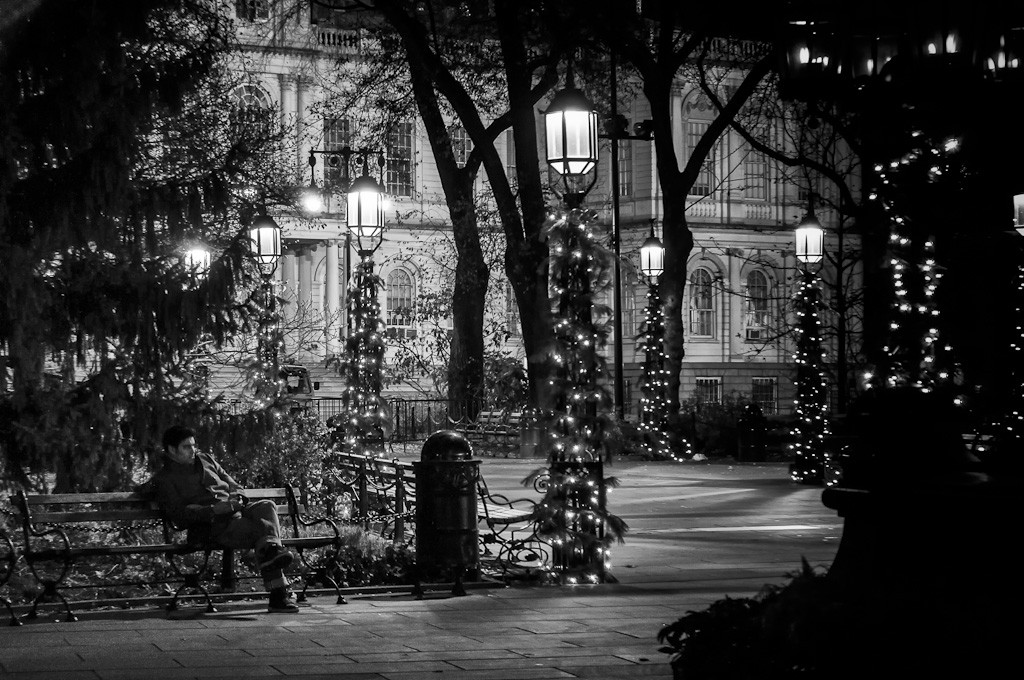The Nostalgia Only Goes Back Ten Years
Soundscan Surprises, Week Ending 11/17
Back-catalog sales numbers of note from Nielsen SoundScan.
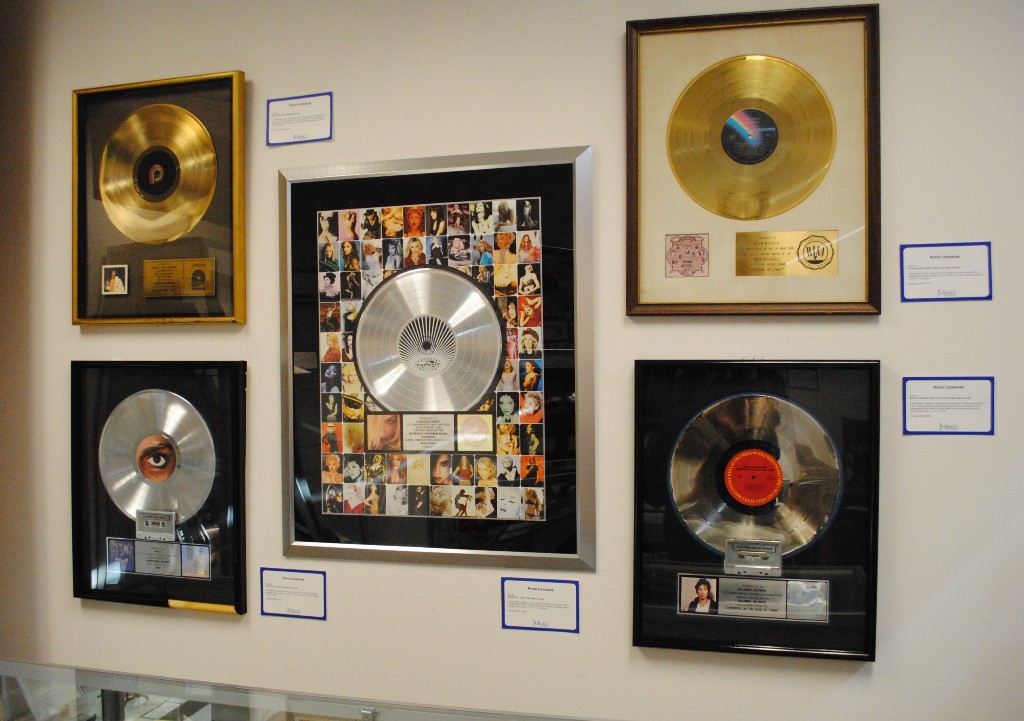
The definition of “back catalog” is: “at least 18 months old, have fallen below №100 on the Billboard 200 and do not have an active single on our radio.”
There’s that Leonard Cohen bump. Always takes a minute for “the market” to realize someone’s dead and they need his “essentials.” Cohen’s are nestled up at #2 between Pentatonix and Michael Bublé. The rest are sprinkled throughout.
Leon Russell died too.
This week’s genuine surprise is a band out of Tallahassee called Mayday Parade???????? The band is celebrating the ten-year anniversary of their album Tales Told by Dead Friendswith a tour. One of their most recent tweets may or may not be hashtag-less #sponcon for Kind snack bars.
A @KINDsnacks bar for a kind human *see what we did there 😏*
The Hold Steady is celebrating the 10th anniversary of Boys and Girls in America with a fancy colorful vinyl LP and some shows. Frontman Craig Finn ran the Philly marathon last weekend:
- PENTATONIX THAT’S CHRISTMAS TO ME 14,272 copies
2. COHEN*LEONARD ESSENTIAL LEONARD COHEN 10,769 copies
3. BUBLE*MICHAEL CHRISTMAS 9,937 copies
41. RUSSELL*LEON BEST OF LEON RUSSELL, THE 2,295 copies
47. COHEN*LEONARD LIVE IN LONDON 2,184 copies
69. MAYDAY PARADE TALES TOLD BY DEAD FRIENDS 1,864 copes
88. HOLD STEADY SEPARATION SUNDAY 1,642 copies
92. COHEN*LEONARD SONGS OF 1,609 copies
96 COHEN*LEONARD POPULAR PROBLEMS 1,575
129. HOLD STEADY ALMOST KILLED ME 1,357 copies
166. COHEN*LEONARD BEST OF LEONARD COHEN 1,187 copies
182. COHEN*LEONARD VARIOUS POSITIONS 1,134 copies
(Previously.)
What's In A Name?
If you see racism, say racism

Yesterday afternoon, the site ThinkProgress announced that terms like “racist” and “alt-right” will no longer be interchangeable in their news and media coverage. It might seem like a given, but many (read: most) publications are still much more comfortable using fun and flirty euphemisms for “white nationalists” or “white supremacists” in the post-election climate.
Take last week, when Trump named Breitbart newslord Steve Bannon his new senior counselor and Chief West Wing strategist. The New York Times generously introduced Bannon as “a right-wing media provocateur” with a passion for advancing “fringe ideology.” Later in the same piece, they quote an Anti-Defamation League statement that refers to Breitbart’s audience as “a loose-knit group of white nationalists and unabashed anti-Semites and racists,” so they eventually get to some particulars, but it seems like without a quote, we have a tough time feeling comfortable identifying hate when we see it in the media. It’s why the ThinkProgress announcement is so cool.
ThinkProgress will no longer treat “alt-right” as an accurate descriptor of either a movement or its members. We will only use the name when quoting others. When appending our own description to men like Spencer and groups like NPI, we will use terms we consider more accurate, such as “white nationalist” or “white supremacist.”
“White nationalist” refers to a specific ideology held by many of those who adopt the “alt-right” label. A white nationalist is someone who believes the United States should be governed by and for white people, and that national policy should radically advance white interests. White supremacists are a broader and more inchoate group, comprised of those who believe in the innate superiority of white people.
Isn’t that good? When someone is a Merriam-Webster white supremacist, the site won’t wink and say “opinionated gentleman” anymore, they’ll let you know what the deal is.
If Donald Trump is a documented and historical perpetrator of pretty much every major societal insensitivity, how often should we be bringing that up? And how directly? It’s a new sort of conversation to be having about an American president, especially before he’s even taken office, but one thing the media seems to be slowly agreeing on is that “alt-right” has its flaws as a descriptor.
“Although the alt-right is ideologically broader than white nationalism — it also includes neoreactionaries, monarchists, and meme-loving internet trolls — white nationalism makes up a significant part of its appeal,” wrote Amanda Taub in the New York Times.
“Jezebel has used the term ‘alt-right’ to refer to this loose conglomerate, among other monikers,” Jezebel’s Brendan O’Connor wrote. “Going forward, however, we resolve to be as specific as possible in naming their beliefs.”
“The prospects of politically incorrect language, disrespect for minorities, and hate crimes are a reality under a Trump presidency — and denouncing racist, white nationalism for what it is has to be part of any sort of resistance,” wrote Joseph D. Lyons in Bustle.
Would editorial conversations like this… have packed more of a punch back in August? Probably. But the good news is that we’re seeing outlets choose to use words for their intended purpose: pinpointing the specific idea you’re attempting to communicate to another, separate brain in the name of achieving understanding. And reader I, for one, am into it.
Tor Goffer, "Tifoh"
This year I’m thankful for sleep, passing out, and not being awake

Well, I guess we made it to Thanksgiving. How many more times will we be able to say that? Not a lot, probably.
Anyway, here’s music. Enjoy.
New York City, November 21, 2016

★★★ The second fugitive snowflake was a bit of leaf or litter scrap, blowing ahead of a cloud of the same. The third was a fleck of down from someone’s cold-weather gear. The first one, though, still resisted disproof. Glimpses of blue or of the glare of the sun marked the weak points in the clouds. The winter coats, furry-ruffed, were out. People standing on the subway underestimated how much room their new bulk took up. By early afternoon, what was flying around was certainly snow, though hardly any.
Tchaikovsky Is The King Of Melody
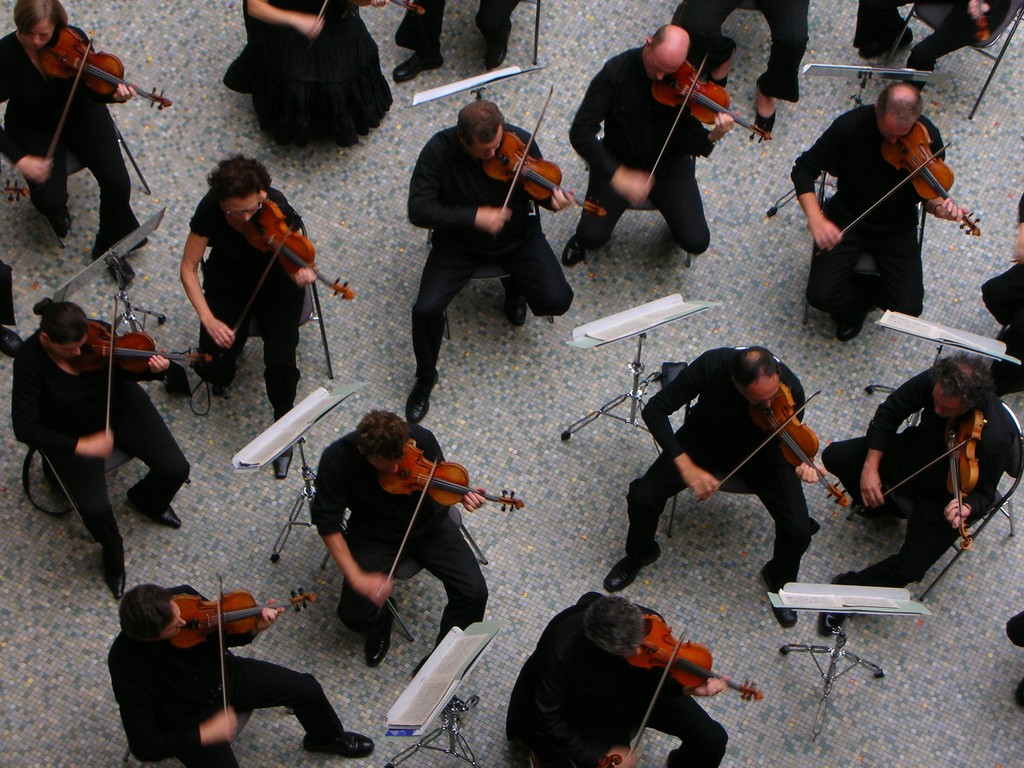
We are on the cusp of all-Christmas-music-all-the-time, so you bet your ass you’re going to be hearing a lot of Tchaikovsky on public radio. You for sure know Tchaikovsky because as an American child, The Nutcracker Ballet is a purely inescapable cultural landmark. You know Trepak? Well, buckle up, babies, it’s non-stop Trepak for the next month.
But Pyotr Ilyich Tchaikovsky (1840–1893) was wonderful and prolific — stretching himself between the traditional style of Russian classical music and the Western-style Romantic music. When he was growing up in Votkinsk, an industrial town, his access to musical education in Russian was relatively scarce, so he went to the Saint Petersburg Conservatory, which valued a Western-style of education. Even if you haven’t taken any kind of history class since your sophomore year of high school, you know that the fundamental cultural debate of just about everything in Russia was: “we’re extremely Russian, but we also want to be Western European, except also not.” This was certainly the case with classical music as well.
In the mid-nineteenth century, Russian classical music, and symphonies in particular, were very self-contained. You didn’t see this carryover of theme or melodies across all movements. It was almost as if each movement was just its own thing under a giant umbrella calling it a “symphony.” On the other side of the continent, however, you had Beethoven, who would begin a symphony by establishing a theme (or more often, a couple of themes) and having it return again and again through different instruments or keys or tempos.
So Tchaikovsky found himself right smack in the middle of this. Everything he learned in a formal music education said, “write a theme and bring it back over and over again so people learn to love it,” and everything he knew from the culture around him said, “do whatever you want, this is Russia and our big rule that we have no rules, but we also have a million rules.” With that in mind, the Tchaikovsky piece I want to focus on this week is his Fifth Symphony, played by the Chicago Symphony Orchestra and conducted under Daniel Barenboim, written for or about Fate, which is, um, heavy-handed and an extremely Russian thing to write about.
The first movement, the Andante — Allegro con anima (slow… but also animated), introduces the theme of the symphony right off the bat. It’s the opening refrain, the A theme. And I’ll be honest: the reason I love this symphony is that I love this theme. Tchaikovsky excelled at creating a damn good melody, and it’s why his music is played so widely throughout the world to this day. The melody comes in at the start of the first movement, played slowly and wistfully by a clarinet. It’s mourning. It’s allowed to feel long and slow and sad, but by around the 2:30 mark, we’re already seeing a revision of the theme: it’s a march. It’s just an extremely versatile melody, catchy and complex.
The second movement, the Andante cantabile (slow but singable) focuses on the B theme, played by a horn solo, that comes in around the 0:50 mark. Is it really singable, as the name of the movement suggests? I don’t know. Not in my voice. Nor is the oboe solo at the 2:15 mark, but they are memorable. At the 10:18 mark in the second movement, the theme comes rip-roaring back in an extremely “Surprise, bitch!!” kind of way.
The third movement, shockingly is, is a waltz! We’ve seen other third movements as scherzos, which are upbeat and dance-like, but not specifically intended to be waltzes. Waltzes were extremely Tchaikovsky’s whole deal. If you close your eyes, the waltz in the Fifth Symphony sounds like a second cousin of the Waltz of the Flowers. It’s light, it’s melodic, with long runs on the flute and violin, known as the trio section. Here’s where it sounds most like a scherzo, or just someone whimsically running through the cobblestoned streets of imperial Russia. In the final minute or so of the waltz, we get one more reminder of the main theme of the symphony before it barrels into…
A GENUINELY WONDERFUL, ENGAGING, AND EXCITING FINALE
This is one of my all-time favorite conclusions to any symphony ever. This is a twelve-minute-long piece that never feels that way. It takes you on a journey, man. For the first two and a half minutes, you’re reminded of the stern, serious main theme before BAM, 2:50: timpani roll, strings, and we’re off. Some personal bias? This is one of the most fun timpani parts of all time. It’s loud, it’s fun, the rolls get to dramatically usher in new parts. You get to sort of just hit drums back and forth, which is the least technical way I could describe it, but that’s what it feels like! By this point in the symphony, you’ve heard this core melody so many times that you know it by heart. Is it possible to know how a movement’s going to go without hearing it before? I’d argue it is.
This finale also does sort of an ending fake-out. I mean, obviously you know it’s not really ending two minutes before Spotify tells you it is, by at the 9:10 minute mark, it does all feel pretty finite. There’s a breath — like, take a second before we really barrel into the end of this — and then we’re back with the timpani and wide, sweeping strings playing that core melody. The main theme is now triumphant where it was once mournful and quiet. It’s been reclaimed, tonally, as a fanfare. Of Fate itself? Maybe? I don’t know what Tchaikovsky was thinking. I just know that it bangs. The final thirty seconds of this, I’m just like, “yes, thank you, amazing, slay, etc.” You will get sick of The Nutcracker; you won’t get sick of this.
Fran Hoepfner is a writer who used to be a musician, but not in an acoustic guitar sense, more in the the movie Whiplash sense. As kids her age discovered the popular music of the early ’00s , Fran spent 10–15 hours a week in private lessons for piano or playing timpani in several Chicagoland youth symphonies. Because of that, she didn’t discover pop music until 2008, and now her music library is almost exclusively classical. You should listen to more classical music, not for any self-important reason, but just because it’s more accessible than you think it is. Also it’s very good.
Holiday Dread: Bottleneck Traffic On I-95
Specifically the northbound corridor just south of D.C.
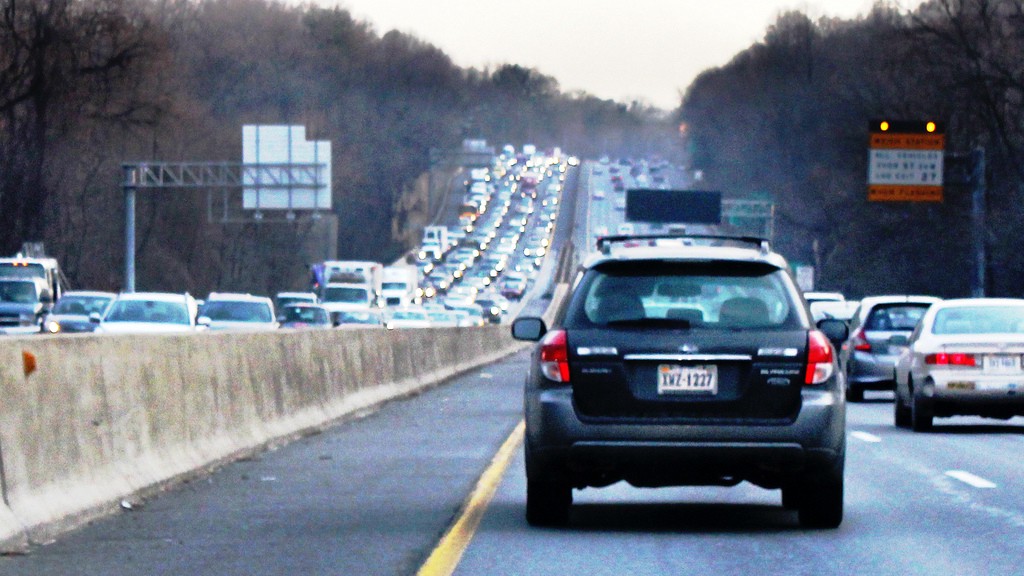
Just when you thought things couldn’t get any worse! The months-long season that immediately precedes the Super Bowl — the season of fellowship and arguing about whether “Die Hard” is a holiday movie — is upon us. And so with this silly season comes, for many, the necessity to transport ourselves away from our residence to gather with family and friends, or the secondary rings of families and friends of loved ones.
Please refer to the traditional carol, “Over the River and Through the Wood.” This so-called song is actually a poem published in 1844 by the prolific writer and abolitionist Lydia Maria Child, and it was originally titled “The New-England Boy’s Song About Thanksgiving Day.” Not only is it incorrectly associated with Christmas, but this poem — traditionally sung in a full-throated whee-isn’t-all-this-fun — is laden with the crushing horror that is holiday travel. Of the four stanzas that were ganked for the song, there is mention of the blowing wind, stinging the nose and biting the toes. But check this rarely-recited sixth (of twelve) stanzas:
Over the river, and through the wood —
No matter for winds that blow;
Or if we get
The sleigh upset,
Into a bank of snow.
That doesn’t sound like a very fun, hot-cocoa-at-the-end sleigh ride together with you; that sounds like shriek-frayed parents who literally cannot and will pull that sleigh over if you kids don’t shut the hell up for thirty seconds, so help me God. It’s the “Planes, Trains and Automobiles” of the nineteenth century, piling the kids into the then-current version of the Subaru Outback and trying to get them to your parents without losing your mind, where hopefully the tryptophan kicks in before they start filling their pie-holes with pie.
Holiday travel is bad and never good, and we all have our stories. But I am here to tell you that the I-95 corridor, just south of Washington D.C., is the absolute worst leg of holiday travel that exists anywhere and if I could punch it in the face or set it on fire and push it down a flight of stairs, no jury would convict me.

I live in New York; My family, Virginia. To see them, I drive. Only a madman would choose to shoot straight through D.C., which is nestled in the center of a belt Interstate. I-495 is a traffic circle, where the major intercity arteries (I-270 from Frederick, I-95 back and forth between Baltimore and Richmond, US-50 over to Annapolis, and I-66 to some cities I guess but mostly the Appalachian Mountains) dump incoming vehicles. From there, they zoom around like balls on a roulette wheel and then either filter into the burbs or the city itself or find the outgoing artery and zoom back out, like roulette balls that got a little giddy and flew off the roulette wheel like a rock from a sling. This is only how it goes in theory, of course, because in practice, nothing ever moves so footloose and fancy free during normal-people hours. When it’s not bumper-to-bumper, the traffic is more like beware-the-inevitable-sudden-brake-slam.
Sometimes, having made it relatively painlessly past Baltimore, I would choose to swing 495 to the east, which is technically shorter, but other times I’d swing west towards Bethesda, as the Woodrow Wilson Bridge was being slowly replaced for a couple years. But either way, I’d nose down and around D.C. and it wasn’t bad, and my hopes would elevate, and I’d hit this tremendous can of worms (a term of art for an enormous vehicular clusterfuck in my hometown back in the day) just a few ticks north of a constellation of shopping malls and plazas in Springfield. From there, this absolute spigot of traffic from just about everywhere merges together to continue down I-95 skirting the Chesapeake Bay, and I’d think for just a second: “We made it! This is the year that we made it!” And of course, it would not be the year that we made it, as the brake lights accumulated and traffic smash-cuts from “slowdown” to “parking lot” and the next ninety to a hundred and eighty minutes of my life stared me in the face.

Many people live and work in the greater D.C. area, and anecdotally, the workday drivetime traffic is monstrous and nothing to wish on anyone. If we’re gonna get all scientific about it and look at facts, or at least factoids as compiled by public interest groups and then disseminated via press release to tempt editors to repurpose such factoids to fill up local news column inches, the particular stretch of I-95 is not only not one of the worst traffic bottlenecks in America, it’s not even in the top three bottlenecks in the greater D.C. Metro Area. But these studies fail to take into account my anecdotes, which is why they are flawed.
And anyhow, this is not wretched salaryman grind that I’m talking about, this is holiday traffic, which takes the normal wretched salaryman grind, with all of the Representatives and Senators and their respective lobbyists and interns back to the usual schlep to/from office/bars PLUS ALSO every single person/family on the Eastern Seaboard that is either going up or down the coast. The malicious accident of geography just shoves all of this traffic, including my personal traffic, into this little tiny choke point that is only eighteen or twenty lanes wide.
Most confusing is that these roadways are actually parts of the Dwight D. Eisenhower Interstate Highway System. Isn’t it the job of Interstates not to bottleneck like this? Funny I should ask. This is not technically true. (Yet.) The D.D.E.I.H.S., even back before it was called the D.D.E.I.H.S., was indeed designed and intended for civilian use. (You might have heard otherwise. Myth.) Take it from lame-duck Secretary of Transportation Norman Mineta: “The Interstate network has provided a vital link for connecting goods to markets here and around the world and bringing together people from our nation’s cities, towns and rural communities.” Nothing about bottlenecks at all.
And to be honest, while the D.D.E.I.H.S. is truly a marvel of engineering and purpose, the likes of which kind of make you weep, the DoT is not empowered to run the system all by itself. It paid to build them, provides unified design and engineering specifications, and has say over new interchanges. But upkeep? That’s the problem of the State in which the road is located. Increasing the number of lanes? State, not DoT. Tackling huge traffic nightmares like this I-95 corridor just south of D.C.? State, or in this case, the Commonwealth of Virginia.
(I am aware that not everyone has suffered/will suffer the life-threatening mortal insult that is the holiday rush hour bottleneck that is the I-95 corridor just south of D.C. Yes, I figured that out all by myself. Maybe instead of nitpicking you should consider yourself lucky to be suffering through a normal holiday travel nightmare, or even not traveling at all, like a sane person. Or you could go start your own holiday travel nightmare, how about that? Maybe build something instead of always tearing me down. You are unbelievable.)

Surely there is a solution to this, to the holiday traffic beartrap? Or I guess the rush-hour trouble too? Is there an “app for that,” he tweeted smirkily? There may be, but there is something even with even more Ayn Rand flavor: the Public–Private Public Road Privatization-Industrial Complex. In this case, the specific “public–private partnership” — the multinationals known as Fluor Corporation and the Transurban Group — took this stretch of Interstate, and renovated the HOV lanes into tolled HOV (or, HOT) lanes, such that vehicles with any amount of passengers can buy their ways in. The jury is still out on whether it worked (I recommend the aforelinked Citylab story even though it is long and blames no one), but thankfully it did not work before my annual helldrive so I don’t yet have to lie about how it never got better.
But where do the tolls go? The multinationals keep the tolls. They, and the other players in the P.P.P.R.P.I.C., pay a big chunk of money to the municipality in exchange for the right to operate (and set and take in tolls) a bit of public infrastructure for a long long time, in this case, 76 years. The public side provides the asset and the private side takes it away from the public, all for a one-time payment. Elected officials serve only for a couple years, and not 76, so this transaction is like the opposite of saving for your kid’s college. This is not an isolated phenomenon — see the Indiana Toll Road, Chicago’s parking meters, Skyway and — well, I guess charter schools are also part of this but they spend a lot of money on PR firms so not fair to include them here.
So yes, authorities are trying to unfuck this particular quicksand of broken dreams on I-95 just south of D.C., by calling in the angels of the free market. Traffic may or may not get better over time, but at least more multinationals will be making more money.

The state of empiricism being what it is today, explaining away this black hole parking lot of holiday travel as failure of the various governments to anticipate and react to the vehicular needs of a region and its passers-through is just too simple, too pat. It’s what they want me to think. Now, I admit that I am no expert in traffic and how it works, no matter how much I admired the Campbell Scott character in “Singles.” But I know what I know, and I have actually driven a car many times down this stretch of I-95. And if I were the Campbell Scott character in “Singles,” what I would tell you is that there is something going on here.
Being a not-expert, my first instinct is to blame this on ghosts. It is only natural to ask, “Which ghosts, and where?” And so my next first instinct is: Ancient Indian burial grounds! This is an old trope of horror movies of course, which are not only fiction but sometimes a little bit less than plausible. But a real big ancient Indian burial ground would theoretically hold enough ghosts to mess up so much traffic, and also the ghosts would be super pissed at us because we still call them Indians. Think I’m wrong? Ask the Cleveland We Lost Three World Series Elimination Games if they think I’m wrong.
Sadly, after much research, both Google and Wikipedia agreed that there is not much in the way of ancient Indian burial mounds directly underneath that stretch of I-95. I did find record of ancient Indian burial grounds a bit further to the west, out towards Charlottesville, home of the University of Virginia. In fact, there’s one that was excavated by Thomas Jefferson, and another one a couple miles north, up on the banks of the Rapidan River. However, my understanding of how these things work, you have to build the actual thing, or the swimming pool of the thing, on top of the ancient Indian burial mound for it to work. So maybe I’m wrong.
Happily for me, I remembered something else about the region, so I don’t have to entertain any weird thoughts about being wrong. Both Google and Wikipedia agree that Northern Virginia is just lousy with Civil War battle sights. My theory is that this is because the capitals of the Union and the Confederacy kind of bookend this stretch of I-95, so when the sides were all like, “Let’s go fight these guys about who gets to write the history books!” they met in the middle. The middle, like, the I-95 corridor just south of D.C.! And, my gosh, the road goes right through Dumfries and also Fredericksburg! There are Civil War battlegrounds scattered around that part of Virginia like plastic bags stuck in the trees of a forest! Now, it has to be said that these hordes and hordes of Civil War ghosts may not be so mad about the name of the NFL team that plays in FedExField, but, since let’s say half of these ghosts lost the Civil War, they’re mad about that? I mean, that seems to be the case with a lot of non-ghost living people?
So clearly, it is the case that the ghosts of the Civil War dead, perhaps even the ghosts of the Confederacy, that bedevil the I-95 corridor south of D.C. so. I have unfriended any friends/family/fans that think otherwise. I will not let bloodlines/affection sway me from telling you what the case is. So as you disperse, taking into account the fevered advice of our news professionals, and are inevitably trapped the sad slow misery of cars not moving, be grateful that your municipality is not so freaking haunted by the ghosts of the Confederacy who are all still mad at Henry Ford or something. Be thankful and count this in your blessings, and remember that while avoiding talking about politics, this revelation and the weather are tremendous for filling in the silences — something to make the eventual holiday embrace of your loved ones all that more Hallmark.
Holiday Dread is The Awl’s series dedicated to the season of joy and other emotions. Previously:
Holiday Dread: Small Talk With White People
This year, it will feel more loaded than ever.

Small talk. Phatic Communication. Shit-shooting. Whatever you call it, exchanging meaningless decontextualized words as a social grace is a foundational part of human life. And the holidays are a high-volume period of the year for small talk. But if you’re a nonwhite person living in a country that just witnessed the regressive victory of white nationalism, the prospect of mingling at a holiday party and being forced to chitchat with white semi-strangers can feel more loaded than ever.
What do you do? Where are you from? Do you see my very existence as a threat to yours? Where’s the bathroom?
The key to small talk is to remember that it is supposed to be small and harmless. As soon as it turns even slightly towards actual dialogue, it is your choice to either confront it by replying or to confront it by walking away. How do you manage the sadness and paranoia of this first holiday after millions of mostly white people put a con artist in charge of the military? How do you talk in a meaningless, offhand way about this unprecedented new chapter of our national and global history? And most of all, how do you overcome centuries of interracial mistrust so that you can just grouse about LaGuardia Airport for a while?

1. Resist the Urge to Be Funny
If you think of a good joke or witty retort, save it for when you’re telling other nonwhite people about the conversation later. The problem with jokes around white strangers and semi-strangers is that they will either laugh, which will set off a series of panics in your heart about why they are really laughing, or they won’t laugh, which will set off the same series of panics. Alternately, if a white person makes a joke in your presence this holiday season, even if it’s hilarious, smile and nod and go, “Nice.” It comforts white people to evaluate jokes rather than laugh at them.
2. Avoid Conversational Pauses
You know in action movies how a hole in an airplane sucks all the napkins, barf bags, peanuts, businessmen, into it and out towards the abyss like a high-powered vacuum cleaner? Pauses in small talk with white people are like that. They drain all the little knick-knacks of human life out of a conversation, leaving behind the anxious silence of American history. Think of that tremendous pause in Lenny Bruce’s classic bit, “How To Relax Your Colored Friends At Parties.”
Bruce, playing a slightly tipsy well-meaning white guy at a party, introduces himself to a black guest, played by jazz guitarist Eric Miller. After Bruce, full of hyperbolic bluster, introduces himself (“Pleasure indeed!”), a brilliantly timed pressurized cabin of silence expands between them, leaving nothing but an oppressive awareness of racial difference that tinges everything the white guy says. “You know,” come the first words after the pause, “that Joe Louis is a helluva fighter!” Pauses create a kind of panic in white people. And when white people panic, racism is their pacifier.
3. Don’t Discuss the Weather
If the election results are an indication, many white people seem to believe that decades of climate science is a liberal hoax orchestrated to put the oil industry out of business. Maybe you have family that’s been directly impacted by climate change, maybe you are a climate scientist yourself. Whatever the case, if you are talking to a white person, the chances are good that you may be talking to a climate science denier. This makes idle chitchat about the weather a minefield of suspicion. So now when a white person comments on how “gorgeous” the weather has been this year with the lusty guilelessness of a Romantic poet, and none of the dread you’d expect from a person wearing a tee shirt in Buffalo in December, it’s probably best not to discuss your anxiety about climate change.
4. How to Deal With Appropriative Language
White people love using black slang, humor, expressions. In a way, it’s their default form of small talk, their way of commenting on how boring their own form of vernacular English is. You’re used to this by now. Obviously there are levels to this. Words like “yo,” “homey,” “aight,” “baller,” and “what’s up” are so commonly employed in everyday white American life that they are hardly recognized as appropriative, even though they most certainly are. Know your appropriative language threshold. Do you draw the small talk line at “scrimp” or “we bout to turn up”? Be especially wary of the term “woke” when used by well-meaning white people. It is mostly proof that they are good at appropriating black activist language, which is the opposite of wokeness.
5. Native Informing
There is nothing white people love more than hearing something straight from the horse’s mouth. And on issues of race and other “diversity” issues, you, nonwhite person, are often that horse. They love steering small talk towards race when you’re around, even with a question as seemingly harmless and yet patently absurd as “Which did you like more, “Atlanta” or A Seat at the Table?” Be prepared for them to treat the subject of race or racist policing like a topic. To them, you are an opportunity to finally discuss racial stuff with a real racial person. (To many this is your primary small talk value.)
Of course, you know this is not talk-for-the-sake-of-talk. Not an NBA trade rumor. Not a chance of snow. This is your existential predicament, and to respond to such lines of inquiry can often feel like capitulation that your life is of fleeting topical interest. For your own mental health, don’t engage. They will want your take on “Moonlight.” Give it, but refrain from going in depth. They don’t want to hear about how you wept and thought of your wounds and those of your father. Say something like, “A little slow, but I liked it!” Use a chipper voice. Embrace that you are lying. Remember that, by breaking the primary rule of keeping small talk small, they have forced you to lie. Remember that small talk can be a great defense against having a “conversation” “about” “race.”
Bonus Tip: “Cornucopia”
During this holiday season, when white people are silently listening to you engage them in small talk, they usually say the word “cornucopia” in their heads as you’re talking. Cornucopia. It calms white people to imagine a horn-shaped receptacle for assorted produce, spilling its bounty onto an earthen floor. Try it yourself when white people are engaging you in small talk. Cornucopia. See the grapes and squash tumbling out. Isn’t it nice? Never utter the word aloud though. Just keep thinking “cornucopia” as you nod and make meaningless eye contact.
Mik Awake is also on Twitter.
Holiday Dread is The Awl’s series dedicated to the season of joy and other emotions. Previously:
William Trevor, 1928-2016
And now he’s dead.
William Trevor, the last great short story writer of the 20th century — so, very possibly, the last great short story writer — died on Sunday at 88. Trevor had an uncanny ability to confer dignity and elegance on the ordinary sadness at the heart of life, and in his best work the everyday miseries we fail to observe because they are so quotidian are elevated to the kind of grand tragedy other writers take entire novels to convey. (“I’m a short-story writer who writes novels when he can’t get them into short stories,” he once said of his own longer work, but his novels were pretty good too.)
“Writers seem to belong to two kinds,” says Yiyun Li in this collection of tributes. “There are those who insist on taking center stage. These writers may be brilliant, or didactic, or eccentric, or arrogant, but in any case a reader is told to take a seat: his job is to be dazzled, to be awed, even to be intimidated or bullied into passive acceptance. And then there are those rare writers — Chekhov, for instance, and William Trevor — whose egolessness makes us forget that we are reading a master’s creation; rather, it’s more like living through the story along with the characters, whose pains, flaws, follies and predicaments are ours, too.”
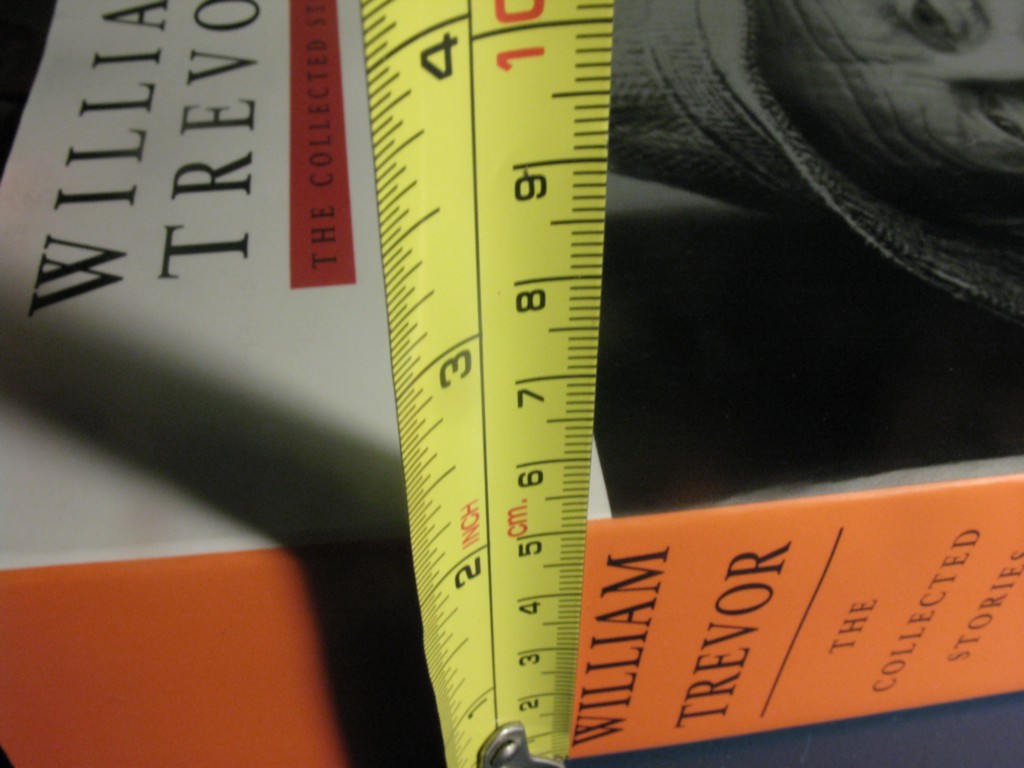
If you get your hands on a copy of The Collected Stories as soon as you can you will be able to take it to any kind of family gathering you might be forced to attend in the near future and use it to set yourself in the corner, away from the conversation. It will be maybe the best gift you can give yourself right now. (Selected Stories works just as well, although it is shorter.) Trevor was a remarkable talent whose work you will read, or re-read, in a quiet admiration of which you will only be conscious after you have finished.
We Have No Other Bananas
Buying, consuming, analyzing.
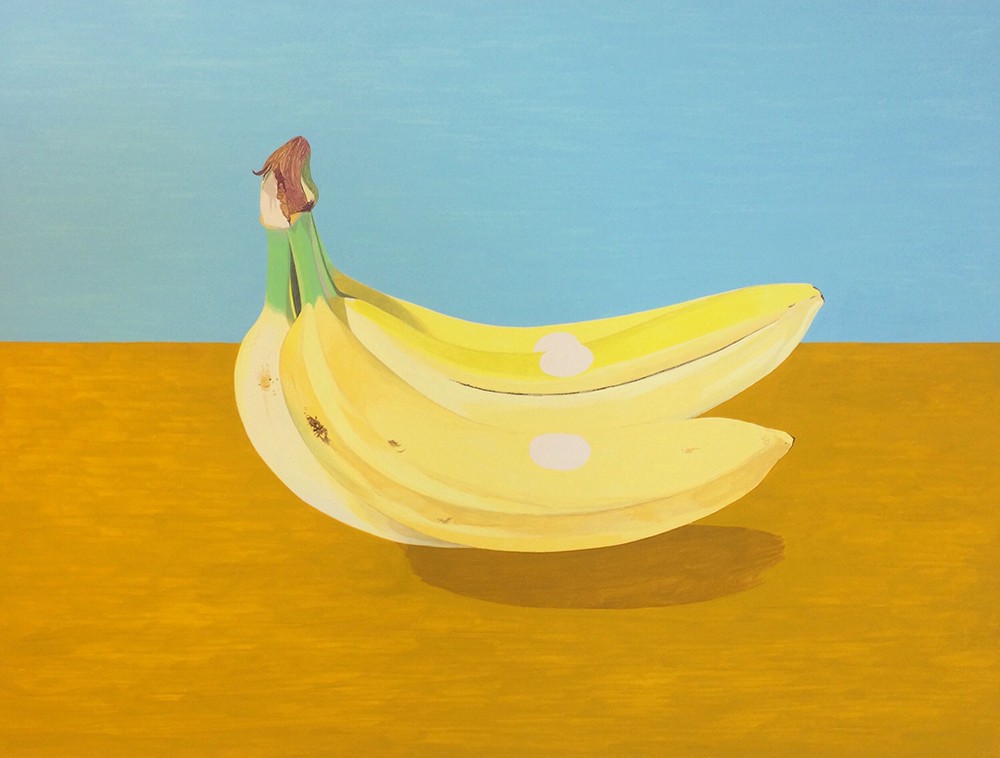
This morning’s banana was perfect, a solid shade of cheerful yellow, deep on the edges and along the lines, brighter in the flat planes. It was the right amount of ripe, not the not-quite-ripe with the tinge of green and the hairy mouthfeel, or the just too-ripe, an extra sweet and soft elixir. But wholly right and solid. I peeled it at the stem and opened it without a hitch. No effort was spent opening the banana, just a quick flick like I’ve done thousands of times. I am very good at opening bananas.
Of course, sometimes things go wrong and the physics of the banana is unexpected and the banana squirts while the flesh stays strong. I have at times opted for the violent but accurate banana snap by holding the banana with two hands, one on each end of the banana, taking a deep breath, and then making a quick jerk with my hands as if breaking a stick. If the banana is the right kind of ripe, it will split in two and your friend who is also hungry standing next to you will marvel at your savvy, your banana knowhow.
This morning I opened the banana at the stem, not really thinking at all. (I do not care for the blossom-end opening. I don’t care if the stem is a handle, I am not a monkey.) Like I said, it was a nice banana. I peeled it back about halfway and used a butter knife to cut it in half lengthwise first, and then into half-moon pieces. I did this for my child’s breakfast cereal, though it is a method I developed in my college dining hall and I remember someone remarking on my cute banana pieces. Perhaps I am the first to favor the half-moon piece over the full disk. I think banana pieces should be about the same size as the cereal pieces. It seems obvious to me.

I have eaten thousands of bananas in all circumstances — rest-stop bananas, airport bananas, 7–11 bananas, street bananas. The summer before my senior year of college I lived in New York in a sublet a few blocks from the Empire State Building. Once near my apartment I saw the woman who played Blanche on the Golden Girls. She was a vision crossing the road with her nose tilted up slightly and a scarf flapping softly as if she were Amelia Earhart crossing the Atlantic.
Each morning, I would walk to Broadway above Houston to work at a magazine that listed events and reviews and was snappy and hip. Somewhere along Lafayette Street I would stop at a cart and buy a banana and eat it as I walked. I did a lot of walking around for the magazine, posting flyers and straightening stacks and checking in on places. Sometimes the magazine would let me write book reviews and the thrill of seeing my name in print made me feel as if I were levitating, blood in my ears, voices cheering. When I interviewed for the job I wore a white t-shirt with the cardigan part of a melon-colored twinset from Ann Taylor. I did not know what a twinset was in those days. (Why would anyone wear two sweaters?) Now I understand better the East Coast ways, but I still will not wear two sweaters.
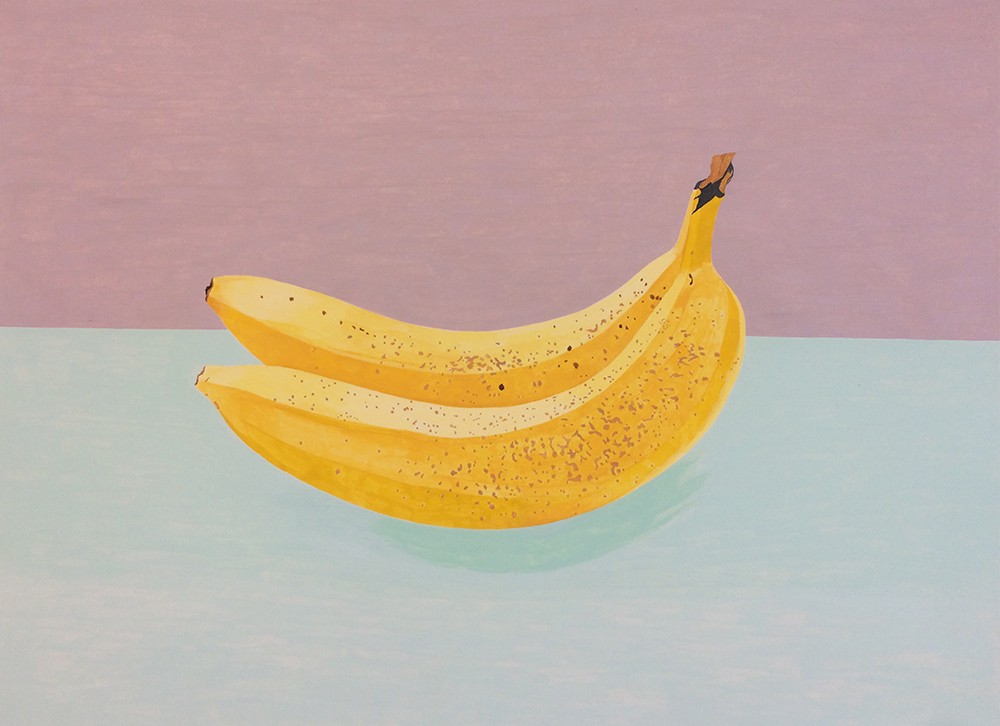
Did anyone ever eat a banana with a spoon? I imagine there was a whole industry of banana-spoon makers that never happened. There are grapefruit spoons, of course, with their tiny piranha teeth, but the banana spoon would not need sharp edges. It would probably need a good point though to dig out the flesh. Would you split the banana at a seam and open it up slightly and then squish the ends like a baked potato? Then you could use your spoon and that would be even less like a monkey. Especially if the banana were on a plate made for bananas. Like a kidney-shaped plate only in a banana shape.
Or would it be better to have a tiny fork and knife? Then you would not need to touch the banana and no one would accuse you of being a monkey because you would have two utensils, a special plate, and a twinset. If you were also wearing shorts and pants at the same time then it would be a double twinset, sitting at the table in your giant chair with a bell and a napkin. I have heard that the banana-utensil industry has tripled in the last year alone. The rest-stop bananas come in individual air-tight cases with a built in spoon system so you can eat on the road.

At the grocery store where I buy my bananas, there are choices to be made. Should I buy the organic or the regular? The organic are often green. The regular are nice and yellow. I try to buy whichever ones are the most yellow-green, the ones that will be ripe in a day or two. There are never brown bananas at the grocery store. Those are given to the monkeys or I imagine piled up in a large pyramid of brown bananas, with the ones at the bottom liquidizing under the weight of the newer bananas stacked on top. This giant banana pyramid is behind the meat counter through the door labeled employees only.
The other choice I must make is whether to stand in line for the human register or the robot one. They both have their appeal. The human register is satisfying because people have nice faces and some pleasantries and sometimes there’s a funny vibe between you and you can laugh together over something small. At my store there is a blind man who will bag your food for you. His hands move smoothly as they handle the food and place everything gently into green cloth bags. He likes to chat and has a rather alluring way about him.
The robot option I take only when I have a few items, like a bunch of bananas and a gallon of milk. The robot does not have a face or pleasantries but it does have a voice that I admire. It says: “Please move your … (pause) BANANAS to the moving belt.” The robot loves saying BANANAS in a loud, flat way very different from the other words.
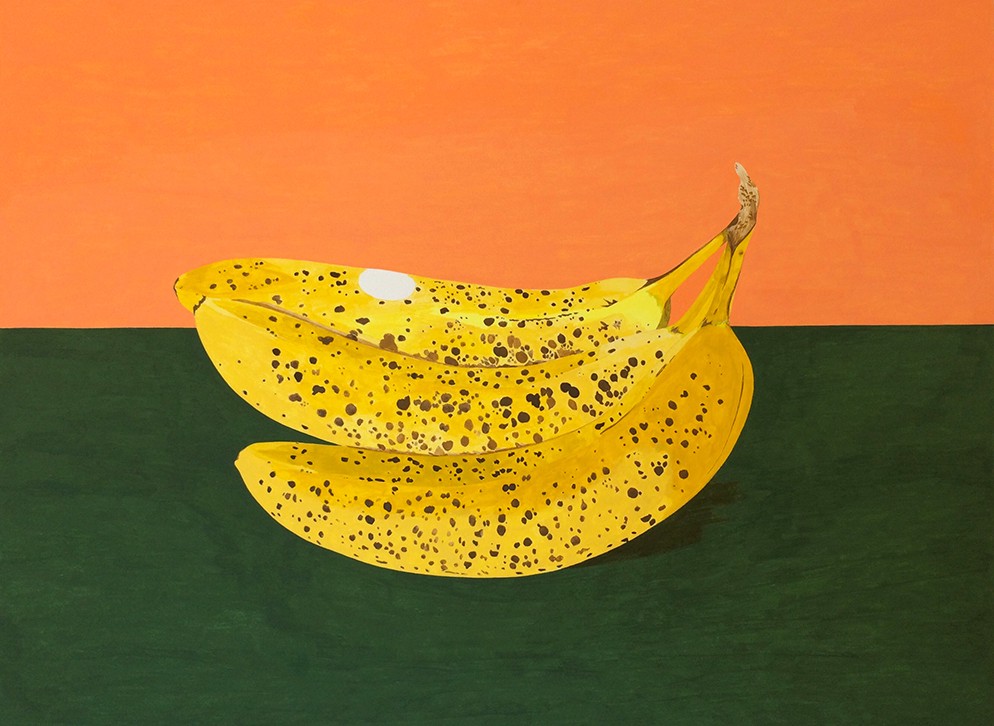
Sometimes the marks and bruises on a banana look like words to me. They tell a story of life from tree to basket to box to truck to truck to boat to truck to truck to rest stop, to car cup holder on a long trip. I’m on my way across the George Washington bridge now and there is terrible traffic and I am stopped still. I will eat my banana.
I open the individual air pack with a flick and grab the small spoon. I always drop it but they have thought of everything and there is a spare spoon to share with a friend. The top of the banana is sliced off of course so I can dig right in with my long pointed spoon. I see the guy in the car next to me is also eating a banana and it’s a different brand of packaging but we all have our favorites. I bear no grudge against this other person, though now I think less of him.
The woman in the car on the other side of me is eating a banana with her hands. That banana must have cost a fortune! Those artisanal types. I bear no grudge against her but now I think less of myself. The traffic begins to move again and I put my banana package back into the cup holder. I’ve heard they are making cars with special banana holders so you can be hands free.

Now it is time to review. Do you: A) wear the twinset to the interview now that you know what it is, B) choose the human or robot checkout line, C) eat your banana like a monkey, D) look for truthful messages in the spots on your banana, E) all of the above?
Answer: I will eat the other half of this morning’s perfect banana that my child does not eat and I will toss the peel into a compost bucket made out of an empty milk gallon. I will say goodbye to the dog and go on my way to work where I will forget about this banana and the thousands of bananas before it. I may even have another banana before noon and it will be a little too ripe, because it is an office banana. I will open the banana at the stem and eat it with my hands because the banana utensil industry is a sham.
Later today, early this evening, I will go to the grocery store and not like the look of any of the bananas. I will throw open the door behind the meat counter and choose option F) jumping headlong onto the pyramid of bananas. I will try tossing the rotting flesh up with joy like autumn leaves. The bananas will fall heavily with a thud and the goo will be thick.The weight of my body, built up over the years by thousands of bananas, will turn everything below me into a syrupy puddle. My twinset is ruined. The puddle will leak out into the meat department and someone will call for a cleanup. People will suggest I make banana bread and perhaps I will, someday. I know you can’t swim in bananas forever. But for now I will claim this small kingdom and I will tread the banana elixir.
Amy Jean Porter is an artist who lives in Connecticut. She illustrated The Artists’ and Writers’ Cookbook: A Collection of Stories with Recipes edited by Natalie Eve Garrett (powerHouse Books, Fall 2016).

